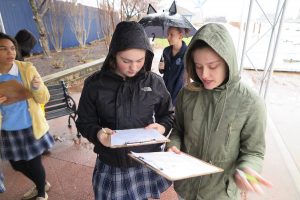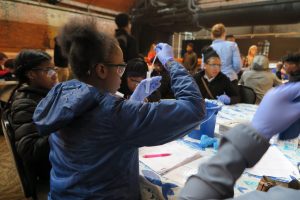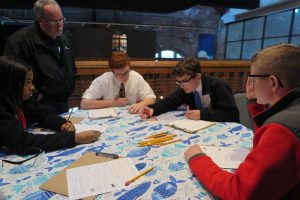Putting it to the Test: Cuyahoga River’s Water Quality
Cuyahoga means “crooked river,” for good reason; it kind of looks like a backwards letter “U.” The river begins with two separate branches in Geauga County which join and flow south through the city of Akron. The river then comes back north to Cleveland and empties out in Lake Erie.
Throughout the 1800s, Ohio grew. The Ohio and Erie Canal gave local businesses and farms access to resources. That connectivity meant Ohio’s farmers could sell their goods for higher prices in a more competitive market.
But as industry and population grew there were some consequences. The Cuyahoga River suffered. Minimal laws for waste regulation combined with chemical and steel materials dumped into the river – the Cuyahoga caught on fire not once or twice, but thirteen times. The most famous fire, in 1969, gained national attention and began an environmental movement that sparked initiatives such as the Clean Water Act of 1972 and the formation of the Environmental Protection Agency. The Cuyahoga began to clear.
Through its Rivers & Lakes: Keeping the Great Lakes and our Water Quality Scientist programs, the Aquarium brings students to the River’s banks to test its water quality the day of their visit. Using the scientific method, students determine if the water is excellent, good, fair or poor.






These tests take temperature as well as pH and nitrate levels into account. Students then discuss why it is important to test for these particular things and what variables can change the result. For example, oxygen levels can drop if the water is stagnant, phosphate levels will spike if farm fertilizer runoff enters the water and nitrate levels rise whenever human sewage is dumped in the river from sewer overflow points. According to our Erin Bauer, Greater Cleveland Aquarium’s Education Coordinator, most days the Cuyahoga’s health comes out “fairly good,” but says there’s always room for improvement.
Students tend to have a range of reactions to being out by the river. Bauer states, “Getting to throw a water sample collection bucket into the river is always a highlight. Hearing kids make observations about what they see is always great. There are always a few ‘Eww, the brown water is nasty!’ and ‘Look at those plastic bottles out there.’ But there are also observations like ‘Cool! Look at those sea gulls!’ or ‘Wow, it’s bigger than I thought!’” Bauer is particularly happy when a barge passes by and the students can see how the river contributes to the region’s transportation needs.
The program has help from Northeast Ohio Regional Sewer District (NEORSD) which provides the tubes and tablets needed to test water quality. They also gifted us an enviroscape model that illustrates waste water treatment, drinking water treatment, runoff in the watershed and combined sewers.
Facilitating connections between students and our natural resources is important and Bauer says, “NEORSD and the Aquarium share a desire to educate youth about the urban water cycle.”
Visiting students are asked to brainstorm ways they can make a positive environmental difference for the Cuyahoga River. For example, buying organic produce can reduce phosphate levels, planting trees can decrease turbidity, and reducing water volume while showering or brushing teeth ultimately leads to a decrease in sewer overflow.
– Morgan Wright
